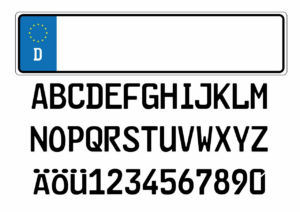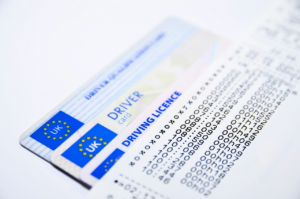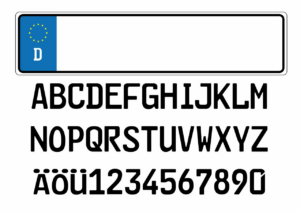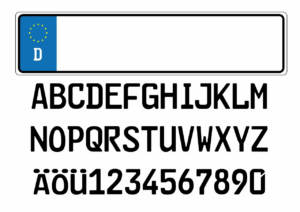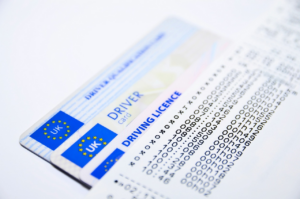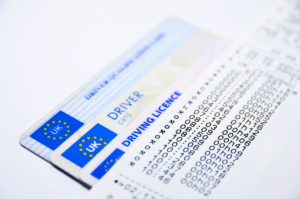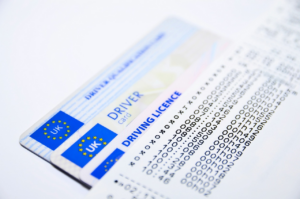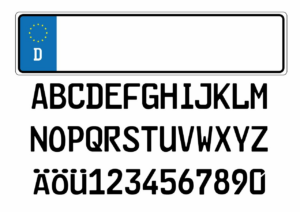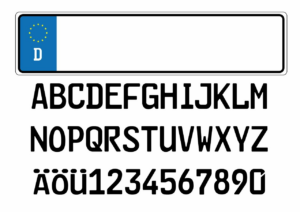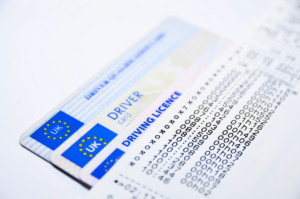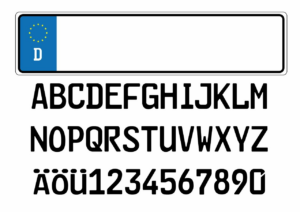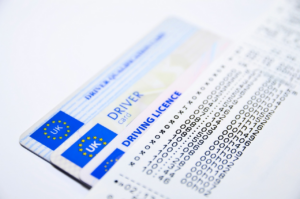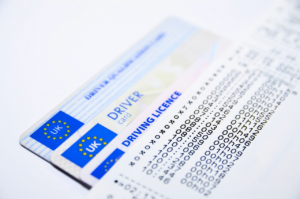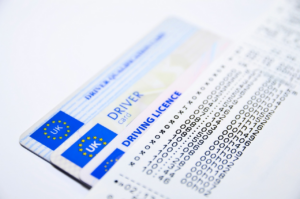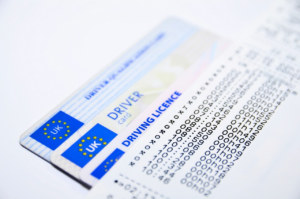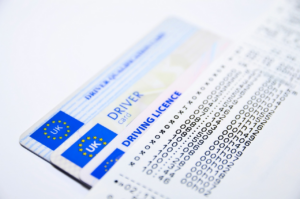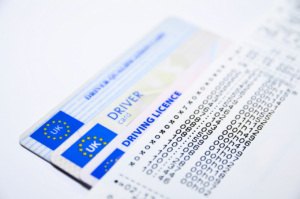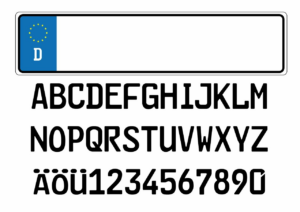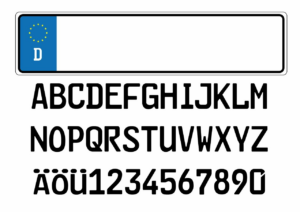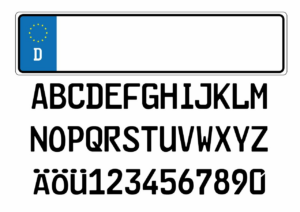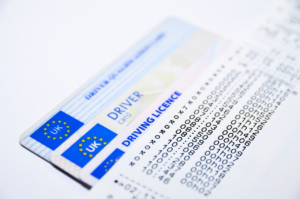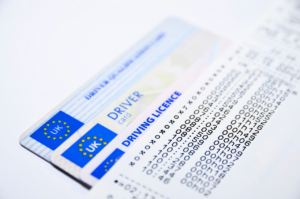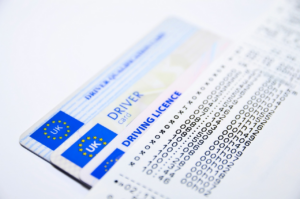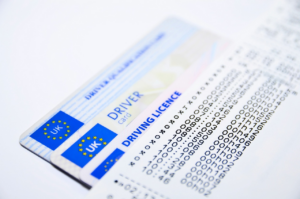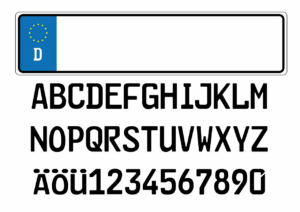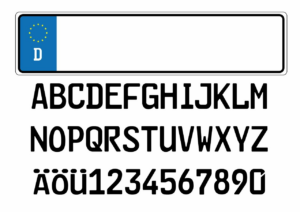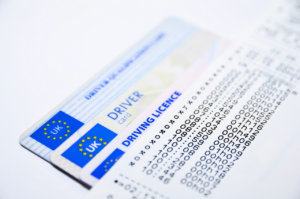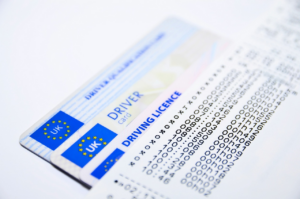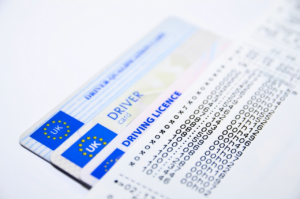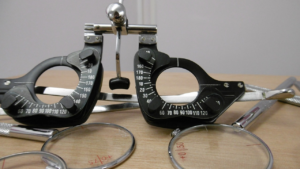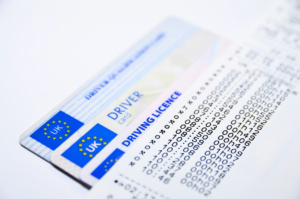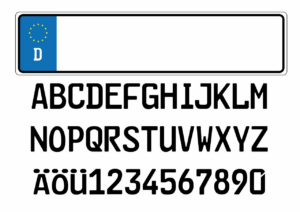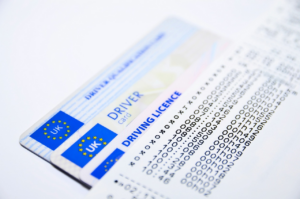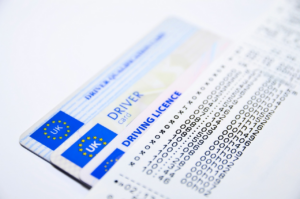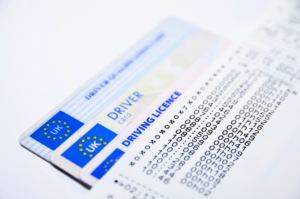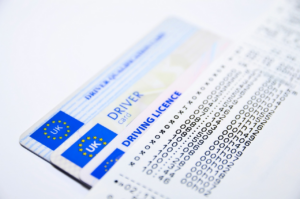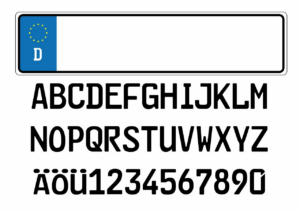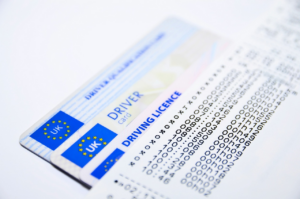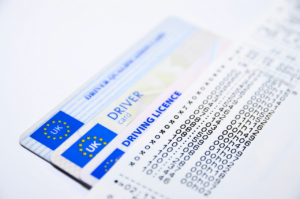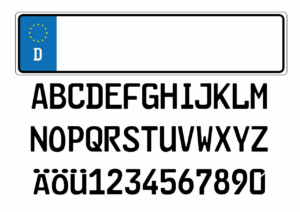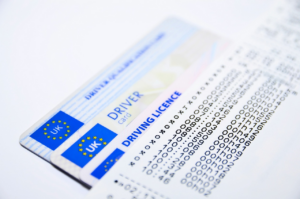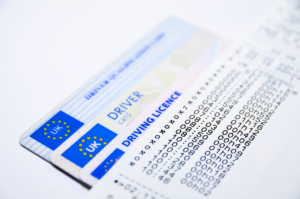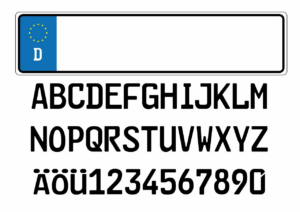So, you’re looking to obtain an Ohio driver’s license? Congratulations! You’re taking an important step towards gaining more control over your life and mobility.
In Ohio, having a driver’s license not only allows you to legally operate a motor vehicle, but it also serves as a valid form of identification. Whether you’re a teenager getting your first license or an adult who just moved to Ohio, this complete guide will provide you with all the information you need to know about obtaining, renewing, and replacing an Ohio driver’s license.
Navigating the requirements and steps to obtain an Ohio driver’s license can be overwhelming and confusing. But fear not! This guide is designed to help you understand the process and ensure that you meet all the necessary requirements.
From the different types of licenses available to the steps you need to take to obtain one, we’ve got you covered. So sit back, relax, and get ready to take control of the road.
Types of Ohio Driver’s Licenses
You’ll find information on the various types of driver’s licenses available in this section.
The Ohio Bureau of Motor Vehicles offers several types of licenses to suit different needs. The most common types are the standard driver’s license, the commercial driver’s license, and the motorcycle operator’s license.
The standard driver’s license is for individuals who want to operate a personal vehicle, such as a car, SUV, or truck. You must be at least 16 years old to apply for this license.
The commercial driver’s license is for drivers who operate large vehicles, such as buses and trucks, for work purposes. You must be at least 18 years old to apply for this license and pass additional tests.
Finally, the motorcycle operator’s license is for individuals who want to operate a motorcycle. You must be at least 16 years old and pass a motorcycle skills test to apply for this license.
Knowing the different types of licenses available can help you determine which one is right for you.
Requirements for Obtaining an Ohio Driver’s License
To obtain an Ohio Driver’s License, there are three key requirements that you must meet:
- You must be at least 16 years old to apply for a driver’s license in Ohio.
- You must be a resident of Ohio and provide proof of residency through documents such as a utility bill or lease agreement.
- You must present identification documents such as a birth certificate, passport, or social security card.
Meeting these requirements is the first step towards obtaining your Ohio Driver’s License.
Age Requirements
The section on age requirements provides crucial information about eligibility criteria for obtaining a driver’s license. In Ohio, you must be at least 16 years old to apply for a driver’s license. However, there are different age requirements for each type of license.
If you’re under 18 years old, you’ll need to complete a driver education course and hold a temporary instruction permit for at least six months before applying for a driver’s license. Additionally, you’ll need to have completed 50 hours of supervised driving, including 10 hours of driving at night.
If you’re between 18 and 21 years old, you’ll also need to complete a driver education course to obtain a driver’s license. It’s important to note that these age requirements are in place to ensure that drivers are experienced and mature enough to handle the responsibilities of driving on the road.
Residency Requirements
If you’ve recently moved to Ohio, you’ll need to prove your residency by providing two documents that list your Ohio address, such as a utility bill, bank statement, or lease agreement. If you don’t have these documents, you can also provide a letter from a government agency or a homeless shelter verifying your address.
It’s important to note that obtaining a driver’s permit is contingent on meeting residency requirements. If you’re under the age of 18, your parent or legal guardian must also prove their residency in Ohio. This can be done with the same documents mentioned above or by providing a letter from the school district stating that the student is enrolled in an Ohio school.
Ensuring that you have the proper documentation to prove your residency will make the process of obtaining an Ohio driver’s permit smoother and less stressful.
Identification Requirements
In this section, we’ll go over what you need to bring to prove your identity. The Ohio Bureau of Motor Vehicles (BMV) requires that you provide one primary document and one secondary document to prove your identity.
Primary documents include a U.S. birth certificate, U.S. passport, or a foreign passport with an I-94 form. Secondary documents can include a Social Security card, W-2 form, or a utility bill in your name.
Make sure that your primary document is an original or certified copy, and that your secondary document is an original or an official copy. Photocopies or scanned documents will not be accepted.
If you have recently changed your name, you will also need to bring in a document that proves your name change, such as a marriage certificate or court order.
By following these guidelines, you can ensure that you have the necessary identification documents to obtain an Ohio driver’s license.
Remember that the BMV takes identity verification very seriously, so it’s important to come prepared and with the correct documents. By doing so, you can save yourself time, frustration, and multiple trips to the BMV.
With your documents in hand, you’ll be one step closer to obtaining your Ohio driver’s license and the freedom and control that comes with it.
Steps to Obtaining an Ohio Driver’s License
Now that you know the steps to getting behind the wheel legally, it’s time to start practicing and preparing for your Ohio driver’s license exam.
The first step is to obtain a Temporary Instruction Permit Identification Card (TIPIC) by passing a written knowledge test and a vision screening. You must be at least 15 1/2 years old to take the test and have a parent or legal guardian present to sign the consent form.
Once you have your TIPIC, you can practice driving with a licensed driver who’s at least 21 years old and has a minimum of one year driving experience.
The next step is to complete a driver education course or 24 hours of classroom instruction and 8 hours of behind-the-wheel instruction with a licensed driving school. You can also choose to complete 50 hours of driving with a licensed driver who’s at least 21 years old and has a minimum of one year driving experience.
After completing the required driver education, you can schedule your driving test. If you pass the driving test, you’ll receive your Ohio driver’s license and can legally drive on your own.
Applying for a Driver’s License as a Teen
As a teen, getting on the road and experiencing newfound freedom is an exciting prospect that can be achieved by following a few steps to obtain your driver’s license. The process itself can seem daunting, but it’s important to remember that it’s all about being responsible and safe while operating a vehicle.
Here are some things to keep in mind when applying for a driver’s license as a teen:
- You must be at least 16 years old to apply for a driver’s license in Ohio.
- Before taking the driving test, you must complete a driver’s education course and have a valid learner’s permit for at least six months.
- You will need to pass a vision test, written test, and driving test in order to obtain your license.
- It’s important to practice your driving skills regularly, whether it’s with a parent or guardian or a professional driving instructor.
- Remember to always wear your seatbelt, obey traffic laws, and never drive under the influence of drugs or alcohol.
By following these guidelines, you can ensure that you’re properly prepared and equipped to handle the responsibilities of driving. Remember, with great power comes great responsibility, and it’s up to you to make the most of this newfound freedom while keeping yourself and others safe on the road.
Renewing Your Ohio Driver’s License
So, you’ve been driving for a while now and it’s time to renew your Ohio driver’s license. Don’t worry, the process is pretty straightforward.
First, make sure you meet the renewal requirements, which typically include passing a vision test and providing proof of identification and residency.
Then, be prepared to pay the renewal fees, which vary depending on your age and the duration of your license renewal.
Finally, follow the renewal process, which may include visiting a BMV office or completing the renewal online.
Renewal Requirements
You’ll need to make sure you meet the renewal requirements before getting back on the road with a valid Ohio driver’s license.
First off, you must be at least 21 years old to renew your license. If you’re under 21, you’ll need to renew it every two years. For those over 21, your license will expire every four years.
To renew your license, you’ll need to provide proof of your full legal name, date of birth, social security number, Ohio residency, and legal presence in the United States. You’ll also need to pass a vision screening test and pay a renewal fee.
If you have any outstanding traffic violations or warrants, you’ll need to clear those up before renewing your license. Keep in mind that Ohio offers a grace period of up to six months after your license expires, but driving with an expired license can result in fines and penalties.
Renewal Fees
Now that you know what you need to renew your Ohio driver’s license, it’s important to understand the fees associated with renewing your license.
Renewal fees vary depending on the age of the driver and the length of time the license is being renewed for. For drivers under the age of 21, the renewal fee is $25. For drivers over the age of 21, the renewal cost is $25 for a four-year renewal and $50 for an eight-year renewal.
If you are renewing your license more than 90 days before it expires, you’ll be charged a prorated fee based on the number of months until your license expires. Additionally, if you need to get a new photo taken, an additional $6 fee will be added to your renewal cost.
It’s important to note that renewal fees are subject to change, so it’s always a good idea to check with the Ohio Bureau of Motor Vehicles for the most up-to-date information. By understanding the renewal fees associated with your Ohio driver’s license, you can better prepare yourself for the process.
Whether you’re renewing your license for four years or eight, make sure you have the necessary funds available to cover the cost. By staying up-to-date with your license renewal, you can maintain your driving privileges and continue to stay safe on the roads.
Renewal Process
Get ready to feel relieved as we walk you through the hassle-free process of renewing your driver’s license in Ohio. The renewal process is quick and easy, and you can do it online, by mail, or in person.
To renew your license online, you need to visit the Ohio Bureau of Motor Vehicles (BMV) website and enter your personal information and driver’s license number. You’ll then need to pay the renewal fee using a credit or debit card, and your new license will be mailed to you within 10 business days.
If you prefer to renew your license by mail, you can fill out the renewal notice that you received in the mail and send it to the BMV along with a check or money order for the renewal fee. Your new license will be mailed to you within 10 business days.
Finally, if you prefer to renew your license in person, you can visit any Ohio BMV office and bring your current driver’s license, proof of residency, and payment for the renewal fee. The BMV will issue you a new license on the spot, and you’ll be ready to hit the road with your renewed license in hand.
Replacing a Lost or Stolen Ohio Driver’s License
If you’ve lost or had your driver’s license stolen, it’s important to replace it as soon as possible to avoid legal or financial consequences.
The first step is to report the loss or theft to the Ohio Bureau of Motor Vehicles (BMV) by visiting a local BMV office or calling their customer service hotline. You’ll need to provide personal information, such as your name, date of birth, and driver’s license number, as well as relevant details about the loss or theft.
After reporting the loss or theft, you can apply for a replacement driver’s license. Bring proof of identity, such as a birth certificate or passport, and proof of Ohio residency, such as a utility bill or lease agreement, to a local BMV office. You’ll also need to pay a fee for the replacement license.
Once you’ve completed the application process, you’ll receive a temporary license that’s valid for 30 days. Your new license will be mailed to you within 10 business days.
By following these steps, you can quickly and easily replace your lost or stolen Ohio driver’s license and avoid any unnecessary legal or financial issues.
Ohio Driver’s License and Traffic Violations
It’s important to understand the consequences of traffic violations and how they can impact your ability to drive legally. Here are a few things you should keep in mind:
-
Traffic violations can result in points being added to your license. Accumulating too many points can lead to license suspension or revocation.
-
Certain violations, such as DUI or reckless driving, can result in immediate license suspension or revocation.
-
If you receive a ticket for a traffic violation, you have the option to fight it in court. However, this can be a time-consuming and costly process.
-
Insurance rates can also be affected by traffic violations, with some violations causing rates to increase significantly.
Being aware of the potential consequences of traffic violations can help you make informed decisions while driving and can help you avoid negative outcomes. Remember to always prioritize safety on the road and obey traffic laws to avoid any issues with your license or insurance.
Frequently Asked Questions about Ohio Driver’s Licenses
In this section, we’ll answer some common questions about getting your driver’s license in OH.
First and foremost, you need to be at least 16 years old to apply for a driver’s license in Ohio. However, if you’re under 18, you’ll need to complete a driver’s education course and hold a learner’s permit for at least six months before applying for your license.
When applying for your driver’s license, you’ll need to bring several documents with you. These include your birth certificate or passport, social security card, and two documents proving Ohio residency. Additionally, you’ll need to pass a vision test and a written exam.
Once you’ve passed these tests, you’ll receive your driver’s license and be ready to hit the road.
Frequently Asked Questions
What is the age requirement to obtain an Ohio driver’s license?
To obtain an Ohio driver’s license, you must meet certain age requirements. The minimum age for a Temporary Instruction Permit (TIP) is 15 and a half years old. However, you must complete 24 hours of classroom instruction and 8 hours of behind-the-wheel training before applying for a TIP.
Once you turn 16, you can apply for a driver’s license. If you’re under 18, you’ll need to complete a driver education course and have a parent or guardian sign your application. If you’re over 18, you can simply take the required tests and apply for a license.
Remember, driving is a privilege, not a right, so it’s important to take the process seriously and follow all the rules of the road.
Can I renew my Ohio driver’s license online?
You’re in luck! If you’re an Ohio resident and your license hasn’t been expired for more than six months, you can renew your driver’s license online.
It’s a quick and easy process that saves you the hassle of visiting a BMV office. Simply visit the Ohio BMV website, enter your personal information, pay the renewal fee, and your new license will be mailed to you in 7-10 business days.
Make sure to renew your license before it expires to avoid any potential late fees or penalties. Renewing your license online is just one way to take control of your driving experience in Ohio.
How long do I have to wait to retake the driver’s license test if I fail?
If you fail the driver’s license test in Ohio, you will need to wait at least 24 hours before retaking it.
However, you may want to take more time to practice and review the material before attempting the test again.
Remember to study the Ohio Driver’s Manual and take practice tests to fully prepare yourself for the exam.
It’s important to remain calm and focused during the test, and to follow all traffic laws and signs.
With dedication and practice, you can pass the driver’s license test and obtain your Ohio driver’s license.
What documents are required to replace a lost or stolen Ohio driver’s license?
To replace a lost or stolen Ohio driver’s license, you’ll need to provide a few key documents.
First and foremost, you’ll need to bring a form of identification, such as a passport or birth certificate.
You’ll also need to bring proof of residency, such as a utility bill or lease agreement.
Finally, you’ll need to pay a fee to replace your license.
It’s important to note that if your license was stolen, you should also report the theft to the police.
By following these steps, you can quickly and easily replace your Ohio driver’s license and regain control of your driving privileges.
Are there any discounts available for Ohio senior citizens or military personnel when obtaining or renewing a driver’s license?
If you’re a senior citizen or military personnel in Ohio, you may be eligible for discounts when obtaining or renewing your driver’s license. The Ohio Bureau of Motor Vehicles offers a $5 discount on driver’s license fees for senior citizens who are 65 years or older. To qualify, you must provide proof of age at the time of application.
Active duty military members and their spouses are eligible for a fee waiver when renewing their driver’s license. To receive this benefit, you must provide a current military ID card or a copy of your orders.
These discounts can help you save money while ensuring that you have a valid driver’s license.
Conclusion
Congratulations, you now have a complete guide to obtaining and maintaining your Ohio driver’s license! Remember, there are different types of licenses depending on your age and driving needs, so make sure you choose the one that’s right for you.
To obtain your license, be prepared to provide all the necessary documentation and pass both a written and driving test. If you’re a teen driver, you’ll need to follow specific requirements and restrictions.
Once you have your license, keep it up to date by renewing it every few years and following all traffic laws. If you ever lose your license, don’t worry, you can easily replace it.
Keep in mind that driving is a privilege, not a right, and with that privilege comes responsibility. Always drive safely and make sure you understand the consequences of traffic violations.
If you have any questions or concerns about your Ohio driver’s license, consult the Ohio Bureau of Motor Vehicles or a trusted driving instructor. With this guide, you’re well on your way to being a responsible and licensed driver in the state of Ohio.





